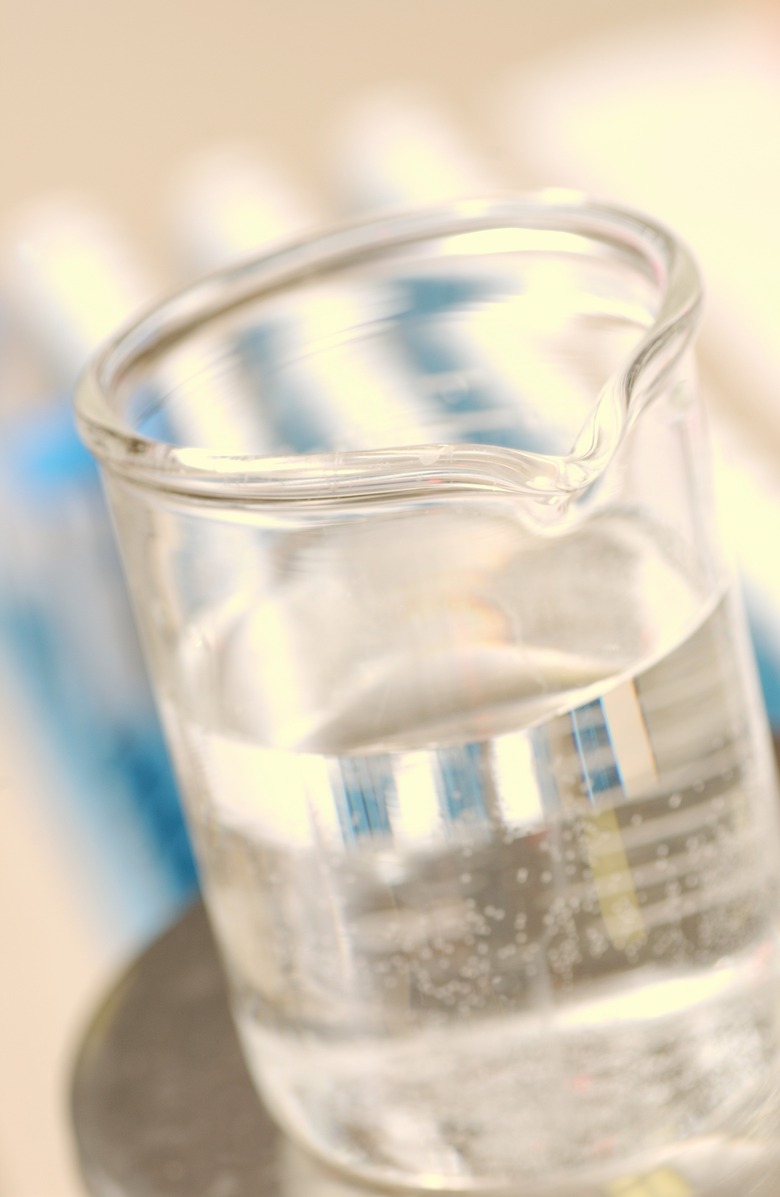Three Types Of Aqueous Reactions
An aqueous reaction is a chemical reaction that take place in water. Many important chemical reactions take place in water and many of these are associated with life. There are three main types of aqueous reactions and these are known as precipitation reactions, acid-base reactions and oxidation-reduction reactions.
Water and Aqueous Solutions
Water and Aqueous Solutions
Water molecules consist of two hydrogen atoms bonded to a single oxygen atom. Many substances can dissolve in water and the result is an aqueous solution. An example of an aqueous solution is sodium chloride (salt) dissolved in water.
Precipitation Reactions
Precipitation Reactions
A precipitation reaction takes place when two aqueous reactants, one solid and one liquid, react to form an insoluble product known as a precipitate. An example is when lead nitrate is mixed with potassium iodide as shown in the following chemical reaction:
Pb(NO3)2 + 2KI => PbI2 + 2KNO3
Lead iodide is the insoluble product that is produced and hence is the precipitate.
Acid-base Reaction
Acid-base Reaction
An acid is a substance that contains positive hydrogen ions. In contrast, a base is a substance that accepts hydrogen ions and produces negative hydroxyl ions in water. When an acid and base react together, the result is a neutralization reaction. An example of a neutralization reaction is hydrochloric acid combining with sodium hydroxide base to produce water and sodium chloride. The chemical equation is:
HCl + NaOH => H2O + NaCl
Oxidation-Reduction Reactions
Oxidation-Reduction Reactions
Oxidation is the process by which a chemical loses electrons and becomes more positive. Reduction is the opposite process and occurs when a chemical gains electrons and becomes more negative. An oxidation-reduction reaction, which is also known as a redox reaction, takes place between a metal and a non-metal. An example of a redox action is when sodium, which is officially classified as a metal, reacts with chlorine and produces sodium chloride:
2Na + Cl2 => 2NaCl
In this reaction an electron is transferred from the sodium atom to the chlorine atom. This leads to a positively charged sodium ion and a negatively charged chlorine ion. The electrostatic repulsion between the two elements creates an ionic bond.
Cite This Article
MLA
Markings, Samuel. "Three Types Of Aqueous Reactions" sciencing.com, https://www.sciencing.com/three-types-aqueous-reactions-13360/. 24 April 2017.
APA
Markings, Samuel. (2017, April 24). Three Types Of Aqueous Reactions. sciencing.com. Retrieved from https://www.sciencing.com/three-types-aqueous-reactions-13360/
Chicago
Markings, Samuel. Three Types Of Aqueous Reactions last modified August 30, 2022. https://www.sciencing.com/three-types-aqueous-reactions-13360/
